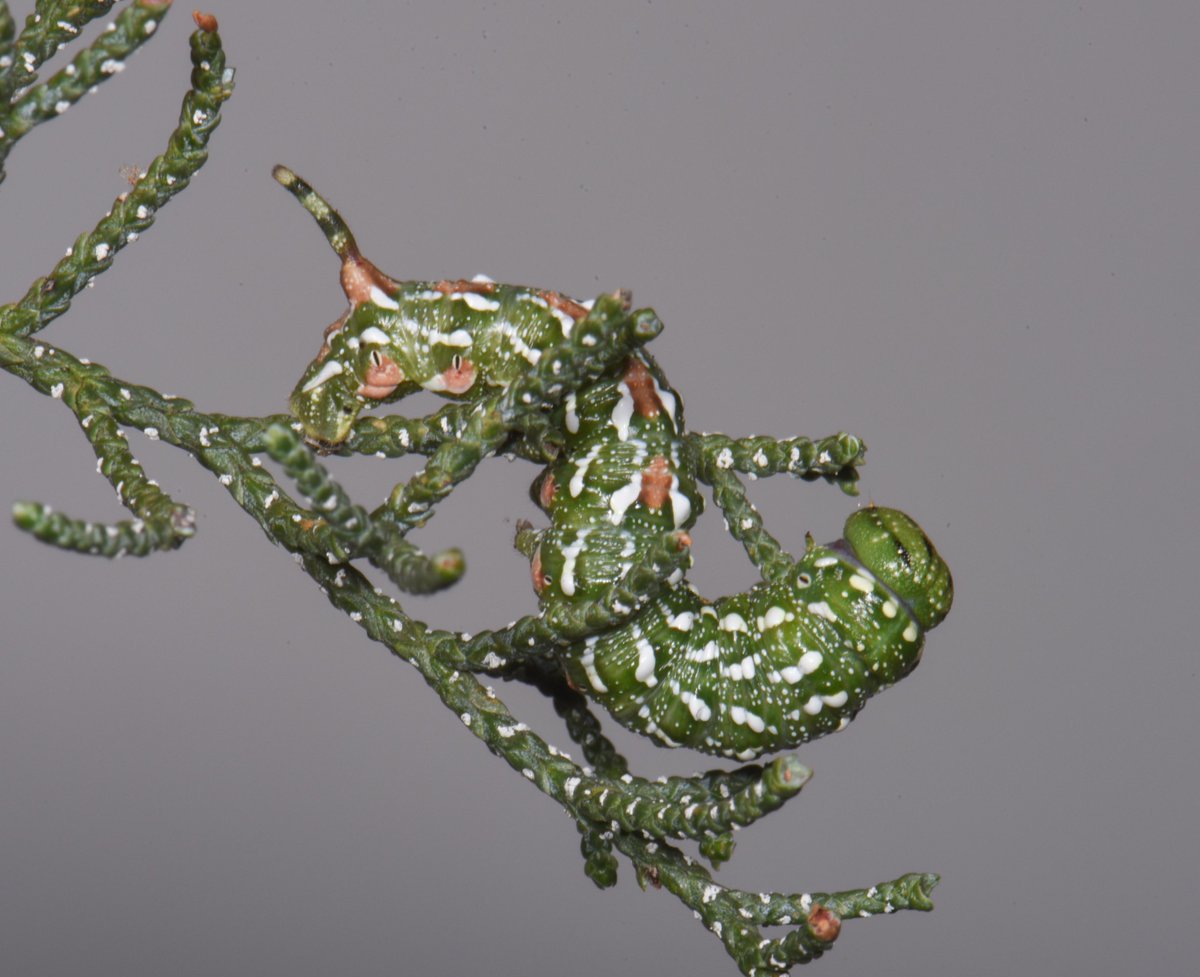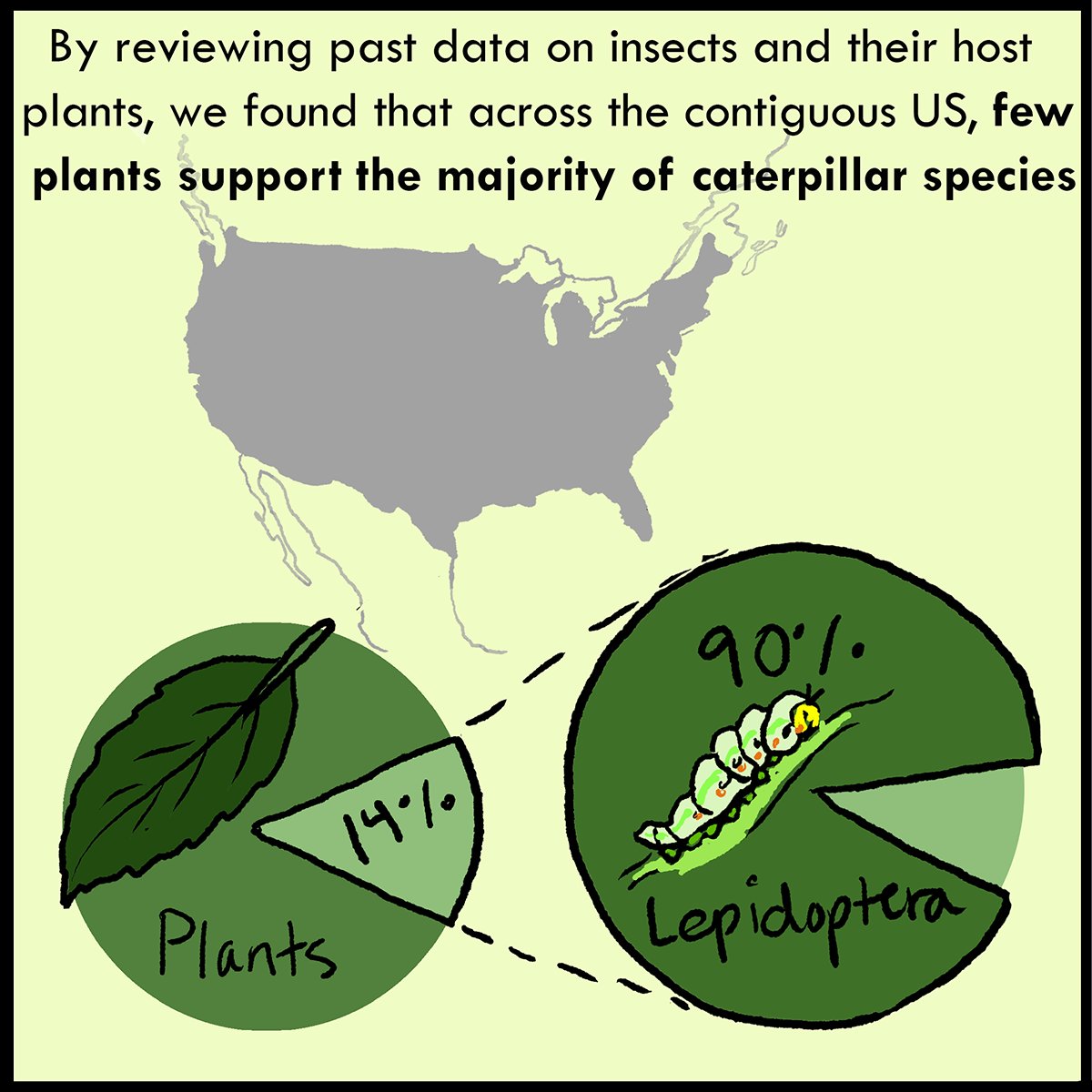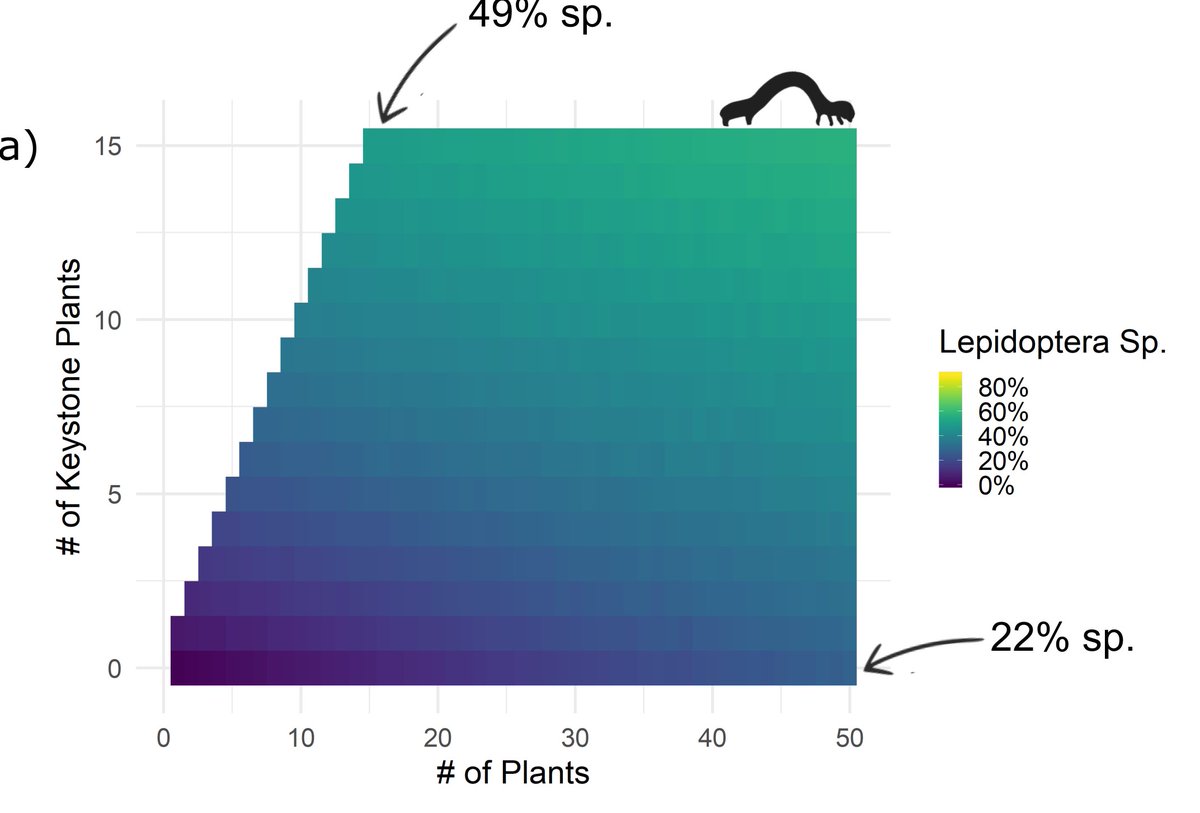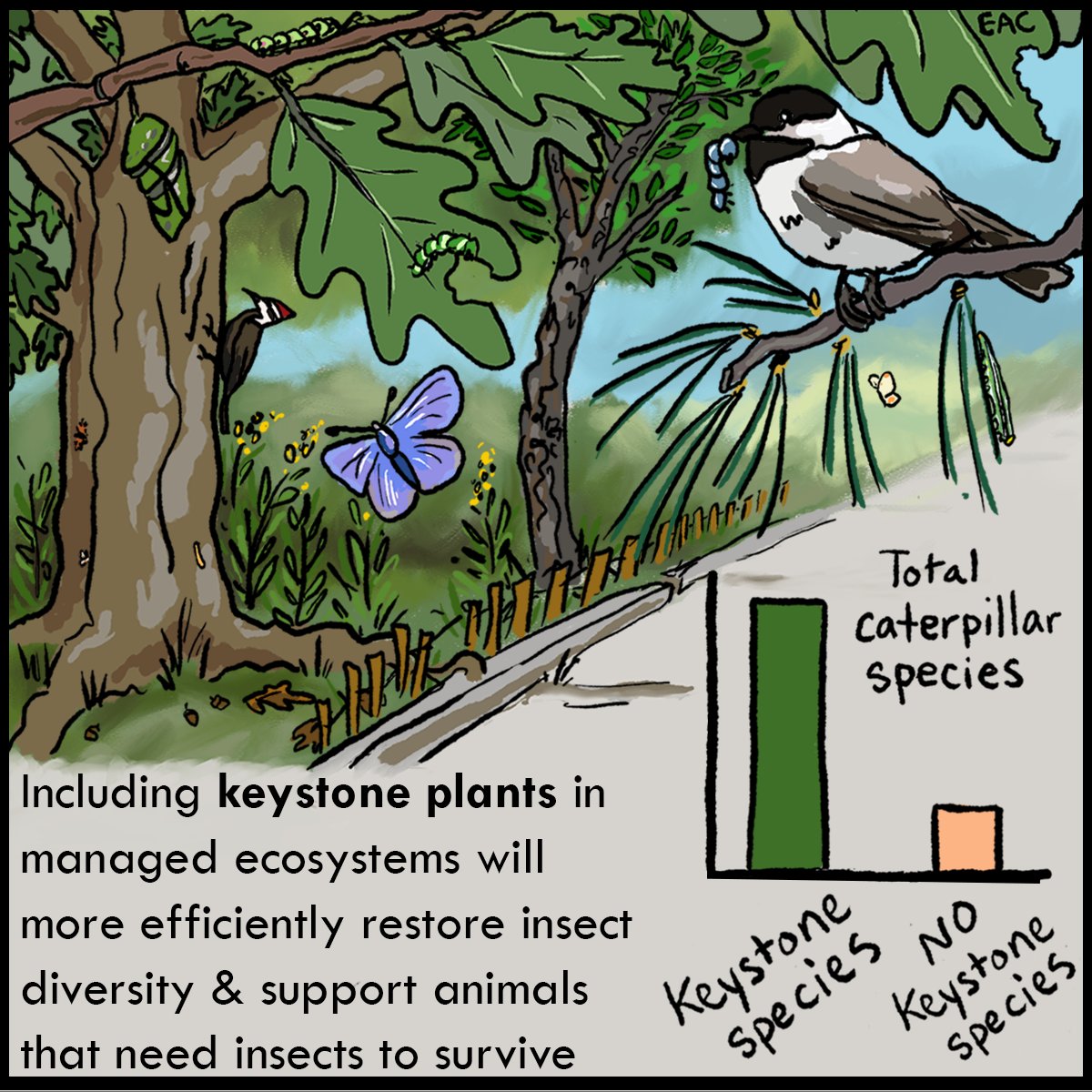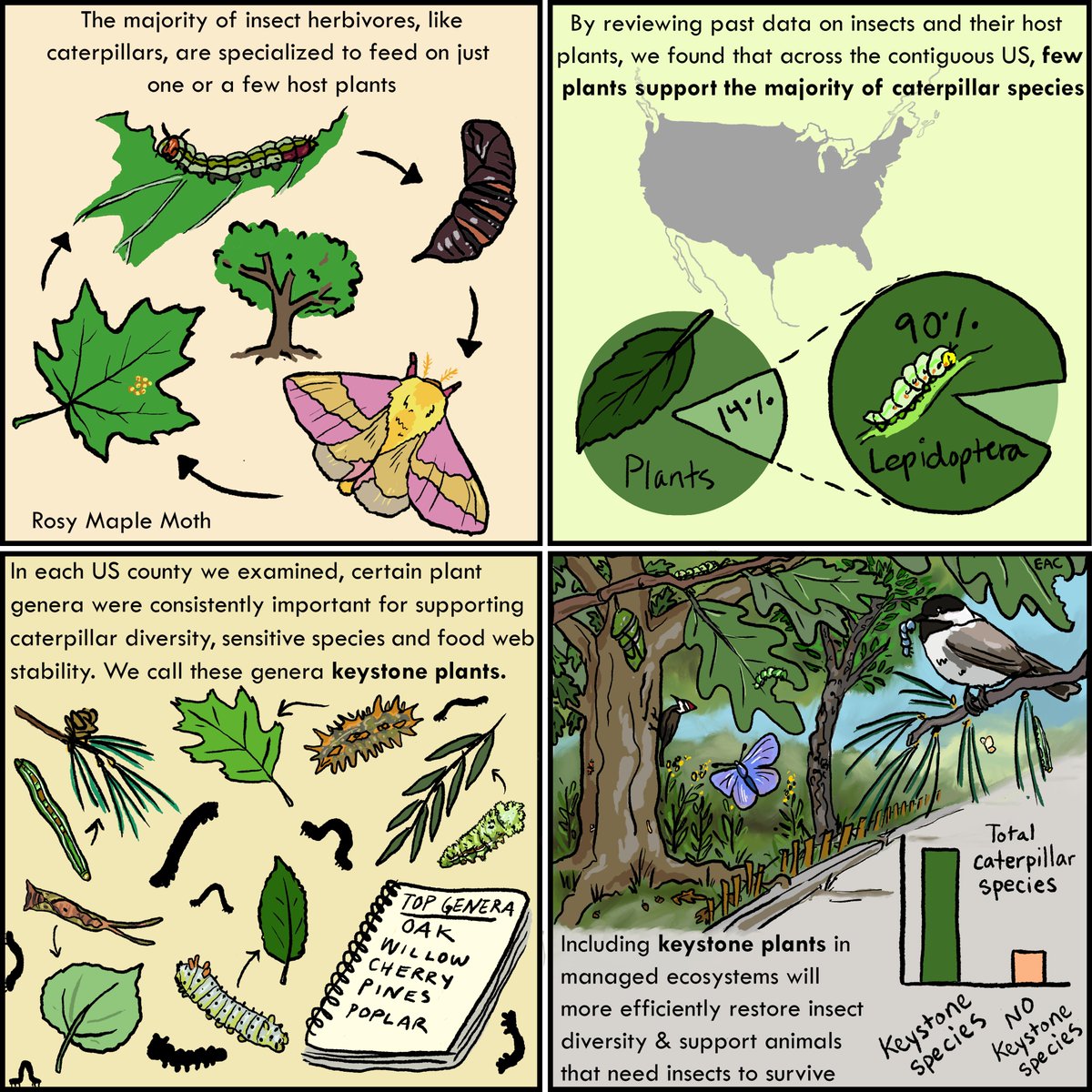New paper! Very excited to share the culmination of many years of hard work from my coauthors & me!
"Few keystone plant genera support the majority of Lepidoptera species"
https://www.nature.com/articles/s41467-020-19565-4
How">https://www.nature.com/articles/... important is plant identity to insect diversity & restoration? A thread...
"Few keystone plant genera support the majority of Lepidoptera species"
https://www.nature.com/articles/s41467-020-19565-4
How">https://www.nature.com/articles/... important is plant identity to insect diversity & restoration? A thread...
For Lepidoptera (butterflies & moths), the majority of the life cycle is spent as a caterpillar. And caterpillars are highly specialized to feed on particular host plants. In fact, a study found that across ecosystems, >90% of plant-eating insects are specialists to some degree!
In this paper, we asked a simple question: which plants support the most caterpillars?
We compiled a dataset of >2k plant distributions, >10K Lepidoptera, & >24k interactions from the entomological literature!
(picture: Doll’s sphinx on Juniperus, pic: D. Tallamy)
We compiled a dataset of >2k plant distributions, >10K Lepidoptera, & >24k interactions from the entomological literature!
(picture: Doll’s sphinx on Juniperus, pic: D. Tallamy)
What we found was surprising: across the US, ~14% of plant genera are supporting >90% of Lepidoptera species!
Plus, across ecosystems, distributions of interactions were consistently skewed, with few plants supporting the lion’s share of Lepidoptera species in a given region
Plus, across ecosystems, distributions of interactions were consistently skewed, with few plants supporting the lion’s share of Lepidoptera species in a given region
It seemed like some genera were popped up repeatedly. So we compared plant contribution to network diversity/sensitivity/stability for 25 states. We found a set of plants consistently had a disproportionately high influence. Top 5=oaks, willows, cherries, pines & poplars
We figure these plants are & #39;keystone& #39; species for plant-caterpillar interaction networks. Do these plants matter to restoration? We used a simulation approach to see if including keystone plants affect our ability to restore Lepidoptera diversity.
We found that for woody plants, including keystone species supported more species & interactions w/fewer plants compared to prioritizing species richness. For herbaceous plants, including keystone supported 2-3x more diversity/interactions than prioritizing species richness alone
Does increasing plant diversity matter? Absolutely! But a plant& #39;s ability to support ecological interactions should be part of decision-making too. For Lepidoptera, keystone plants must be included for restoration to be effective & efficient.
The importance of Lepidoptera as prey for consumers (e.g. birds!) means that prioritizing keystone plants can be part of our tool kit for more informed food web restoration. This approach is especially relevant for restoration in highly managed/novel ecosystems (e.g. urban, etc).
This work raises a number of new ?s: 1) what predicts a keystone plant? (genus size?) 2) Do relationships hold in other continents/taxa? 3) is keystone biomass related to consumer abundance/biomass? Among many others. We hope this work inspires new research in these areas & more!
Many thanks to my coauthors for help leading this project, & over a century of entomologists that contributed observations to this dataset. Keep observing caterpillars there is much more to learn! And tremendous thanks to @e_cuz_ for creating the wonderful art for this work!
Here& #39;s the whole comic, feel free to share! & link to the OA paper. We hope this sparks new conversations about the nuance & importance of plant species identity even among #nativeplants, and is also helpful for anyone doing on-the-ground restoration. https://www.nature.com/articles/s41467-020-19565-4">https://www.nature.com/articles/...

 Read on Twitter
Read on Twitter
